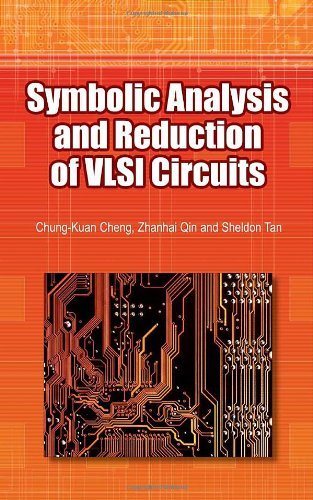F
Frankie
Moderator
- Joined
- Jul 7, 2023
- Messages
- 101,954
- Reaction score
- 0
- Points
- 36

Free Download Symbolic Analysis and Reduction of VLSI Circuits by Zhanhai Qin , Sheldon X. D. Tan , Chung-Kuan Cheng
English | PDF | 2005 | 295 Pages | ISBN : 0387239049 | 11.3 MB
Symbolic analysis is an intriguing topic in VLSI designs.
The analysis methods are crucial for the applications to the parasitic reduction and analog circuit evaluation. However, analyzing circuits symbolically remains a challenging research issue. Therefore, in this book, we survey the recent results as the progress of on-going works rather than as the solution of the field.
For parasitic reduction, we approximate a huge amount of electrical parameters into a simplified RLC network. This reduction allows us to handle very large integrated circuits with given memory capacity and CPU time. A symbolic analysis approach reduces the circuit according to the network topology. Thus, the designer can maintain the meaning of the original network and perform the analysis hierarchically.
For analog circuit designs, symbolic analysis provides the relation between the tunable parameters and the characteristics of the circuit. The analysis allows us to optimize the circuit behavior.
The book is divided into three parts. Part I touches on the basics of circuit analysis in time domain and in s domain. For an s domain expression, the Taylor's expansion with s approaching infinity is equivalent to the time domain solution after the inverse Laplace transform. On the other hand, the Taylor's expansion when s approaches zero derives the moments of the output responses in time domain.
Part II focuses on the techniques for parasitic reduction.
In Chapter 2, we present the approximation methods to match
the first few moments with reduced circuit orders.
In Chapter 3, we apply the Y-Delta transformation to reduce the dynamic linear network. The method finds the exact values of the low order coefficients of the numerator and denominator of the transfer function and thus matches part of the moments. In Chapter 4, we handle two major issues of the Y-Delta
transformation: common factors in fractional expressions and round-off errors. Chapter 5 explains the stability of the reduced expression, in particular the Ruth-Hurwitz Criterion. We make an effort to describe the proof of the Criterion because the details are omitted in most of the contemporary textbooks. In Chapter 6, we present techniques to synthesize circuits to approximate the reduced expressions after the transformation.
In Part III, we discuss symbolic generation of the determinants and cofactors for the application to analog designs. In Chapter 7, we depict the classical topological analysis approach. In Chapter 8, we describe a determinant decision diagram approach that exploits the sparsity of the matrix to accelerate the computation. In Chapter 9, we take only significant terms when we search through
determinant decision diagram to approximate the solution.
In Chapter 10, we extend the determinant decision diagram
to a hierarchical model. The construction of the modules through the hierarchy is similar to the Y-Delta transformation in the sense that a byproduct of common factors appears in the numerator and denominator. Therefore, we describe the method to prune the common factors.
[/b]
Recommend Download Link Hight Speed | Please Say Thanks Keep Topic Live
Rapidgator
r3ubh.rar.rar.html
NitroFlare
r3ubh.rar.rar
Fikper
r3ubh.rar.rar.html
k2s:
r3ubh.rar.rar
Links are Interchangeable - Single Extraction
